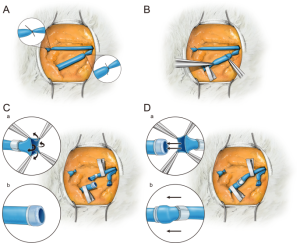EAN Explained: A Blueprint for Seamless Retail Operations
3 min read
EAN
In the dynamic landscape of retail operations, the European Article Number (EAN) system plays a pivotal role in streamlining inventory management, enhancing product traceability, and improving transaction accuracy. This comprehensive guide aims to provide a blueprint for seamless retail operations through the effective implementation of EAN, from its historical evolution to future trends and innovations.
What is EAN
EAN, or European Article Number, is a standardised barcode system used for product identification and inventory management in the retail sector. It evolved from the earlier Universal Product Code (UPC) system and is widely adopted across Europe and beyond. EAN codes consist of a company prefix, item reference numbers, and a check digit, allowing for unique identification of products.
Importance of EAN in Retail
EAN codes play a crucial role in retail operations by streamlining inventory management processes, enhancing product traceability throughout the supply chain, and improving accuracy in transactions. By implementing EAN, retailers can optimize their operations, minimize errors, and provide a seamless shopping experience for customers.
Implementing EAN in Retail Operations
To effectively implement EAN in retail operations, businesses must follow a step-by-step process, including generating EAN codes, integrating them with point-of-sale (POS) systems, and training staff on their utilization. This ensures smooth adoption and maximizes the benefits of EAN for retail operations.
Benefits of EAN for Retailers
Retailers stand to gain numerous benefits from implementing EAN, including increased efficiency in supply chain management, reduction in manual errors, and enhanced customer experience. By leveraging EAN effectively, retailers can optimize their operations and stay competitive in the rapidly evolving retail landscape.
Challenges and Solutions
While EAN offers significant benefits, its implementation may present challenges such as data synchronisation issues and compatibility with legacy systems. However, these challenges can be overcome through strategies such as data migration and integration, as well as comprehensive staff training programs.
Future Trends in EAN Technology
Looking ahead, innovations in EAN systems, such as integration with emerging technologies like RFID, hold promise for further enhancing retail operations. By staying informed and embracing these advancements, retailers can future-proof their operations and stay ahead of the curve.
Conclusion
In conclusion, EAN serves as a cornerstone of efficient retail operations, enabling seamless inventory management, accurate transactions, and enhanced customer experiences. By following the blueprint outlined in this guide and embracing future trends in EAN technology, retailers can unlock new opportunities for growth and success in the competitive retail landscape.
FAQs:
Ques – How does EAN support supply chain integration and visibility?
Ans – EAN enables unique product identification, facilitating seamless integration and visibility throughout the supply chain.
Ques – What challenges does EAN address in the point-of-sale process?
Ans – EAN helps reduce errors and improve accuracy in transactions, leading to smoother point-of-sale processes.
Ques – Are there alternatives to EAN, and why is it widely adopted?
Ans – While alternatives exist, EAN is widely adopted due to its standardised format, global acceptance, and proven track record in retail operations.
Ques – How can businesses generate and assign unique EAN codes?
Ans – Businesses can generate and assign unique EAN codes by obtaining a company prefix from GS1 member organization – GS1 India and following standardized procedures for code allocation.
Ques – Is training required for staff to use EAN effectively in retail?
Ans – Yes, training is essential to ensure that staff understand how to use EAN codes effectively in various retail operations, including inventory management and point-of-sale processes.
Ques – What are the common challenges faced during EAN implementation?
Ans – Common challenges include data synchronization issues, compatibility with legacy systems, and ensuring accurate data migration and integration.
Ques – How does EAN contribute to reducing costs in retail operations?
Ans – By minimizing errors, improving efficiency, and enhancing inventory management, EAN helps retailers reduce costs associated with manual processes and inaccuracies.
Ques – What impact does EAN have on customer satisfaction and experience?
Ans – EAN contributes to a seamless shopping experience by ensuring accurate product identification, reducing checkout times, and minimizing errors in transactions.
Ques – Can EAN be implemented in small businesses, or is it suitable for larger enterprises?
Ans – EAN can be implemented in businesses of all sizes, offering benefits such as improved inventory management and enhanced efficiency, regardless of scale.
Ques – How does EAN support real-time tracking of products?
Ans – EAN enables real-time tracking of products by providing unique identification codes that can be scanned and tracked throughout the supply chain, from production to point of sale.





